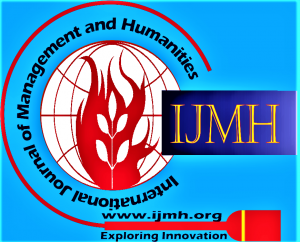![]()
The use of Mobile Phones in Strengthening Health and Demographic Data Collection by Community key Informants: Experiences from the Kintampo Health and Demographic Surveillance System
Edward Anane Apraku1, Abubakari Sulemana2, Francis Dzabeng3, Awurabena Quayeba Dadzie4, Ernest O. Nettey5, Gifty Fosuah Nuamah6, Abukari Mahama7, Samuel Afari-Asiedu8, Emmanuel Mahama9, Charles Zandoh10, Kwaku Poku Asante11, Seth Owusu-Agyei12
1Edward Anane Apraku*, Health and Demographic Surveillance System, Kintampo Health Research, Box 200 Kintampo, Ghana.
2Dr. Abubakari Sulemana, Kintampo Health and Demographic Surveillance System Kintampo Health Research, Box 200 Kintampo, Ghana.
3Francis Dzabeng*, West African Centre for Cell Biology of Infectious Pathogens, University of Ghana, Ghana.
4Awurabena Quayeba Dadzie, World Vision Ghana, Accra, Ghana.
5Ernest O. Nettey, Regional Institute for Population Studies, University of Ghana. Accra, Ghana
6Gifty Fosuah Nuamah, Health and Demographic Surveillance System, Kintampo Health Research, Kintampo, Ghana.
7Abukari Mahama, Kintampo Health and Demographic Surveillance System, Kintampo Health Research, Box 200 Kintampo, Ghana.
8Samuel Afari-Asiedu, Environmental Health and Related Studies, Kintampo Health Research, Box 200 Kintampo, Ghana.
9Emmanuel Mahama, The Global Fund NFM II West Africa Program to Combat AIDS and STI, Accra, Ghana.
10Charles Zandoh, Kintampo Health and Demographic Surveillance System, Kintampo Health Research, Box 200 Kintampo, Ghana.
11Dr. Kwaku Poku Asante, Kintampo Health and Demographic Surveillance System, Kintampo Health Research, Box 200 Kintampo, Ghana.
12Prof. Seth Owusu-Agyei, Institute of Health Research, University of Health and Allied Health Sciences, Ho, Ghana.
Manuscript received on September 29, 2021. | Revised Manuscript received on December 09, 2021. | Manuscript published on December 30, 2021. | PP: 10-19 | Volume-6 Issue-4, December 2021. | Retrieval Number: 100.1/ijmh.A1387106221 | DOI: 10.35940/ijmh.A1387.126421
Open Access | Ethics and Policies | Cite | Mendeley
© The Authors. Published By: Blue Eyes Intelligence Engineering and Sciences Publication (BEIESP). This is an open access article under the CC BY-NC-ND license (http://creativecommons.org/licenses/by-nc-nd/4.0/)
Abstract: Identification and reporting of vital events such as births and deaths remain a challenge within communities in low- and middle-income countries (LMICs). LMICs are recently experiencing high mobile phone penetration. This study, therefore, explored the feasibility of Community Key Informants (CKIs) using mobile phone technology to improve reporting of vital events at the community level. Sixty CKIs were purposively sampled from the Kintampo Health and Demographic Surveillance System (KHDSS) setting based on mobile phone ownership. CKIs were grouped into an intervention and a control group. The intervention arm was provided with mobile phone air time to report vital events that occurred in their communities. The control group used the routine system of reporting in the KHDSS. The number of vital events reported by CKIs increased at the end line compared to baseline: (pregnancy: 40.25% to 72.80%; birth: 56.52% to 69.80%; deaths: 33.33% to 68.60%). The time interval between event identification and reporting was much shorter for the intervention group at the end line compared to baseline: (Intervention: 95.06 days to 31.35 days, Control: 87.54 days to 80.57 days). This study demonstrated the feasibility of CKIs using a mobile phone in reporting vital events more timely and effectively.
Keywords: Community key informants, mobile phones, vital events, Kintampo health and demographic surveillance system.
